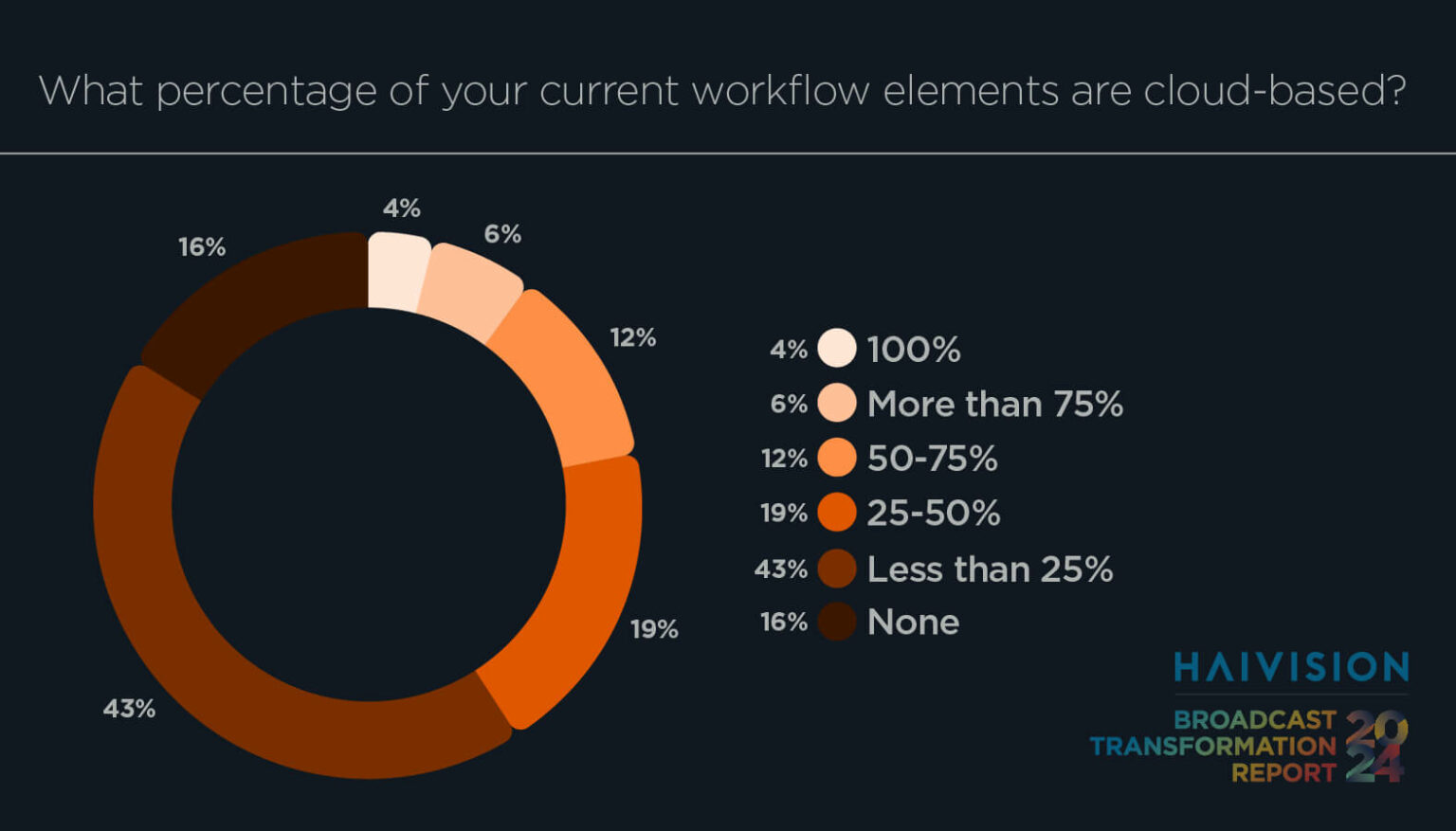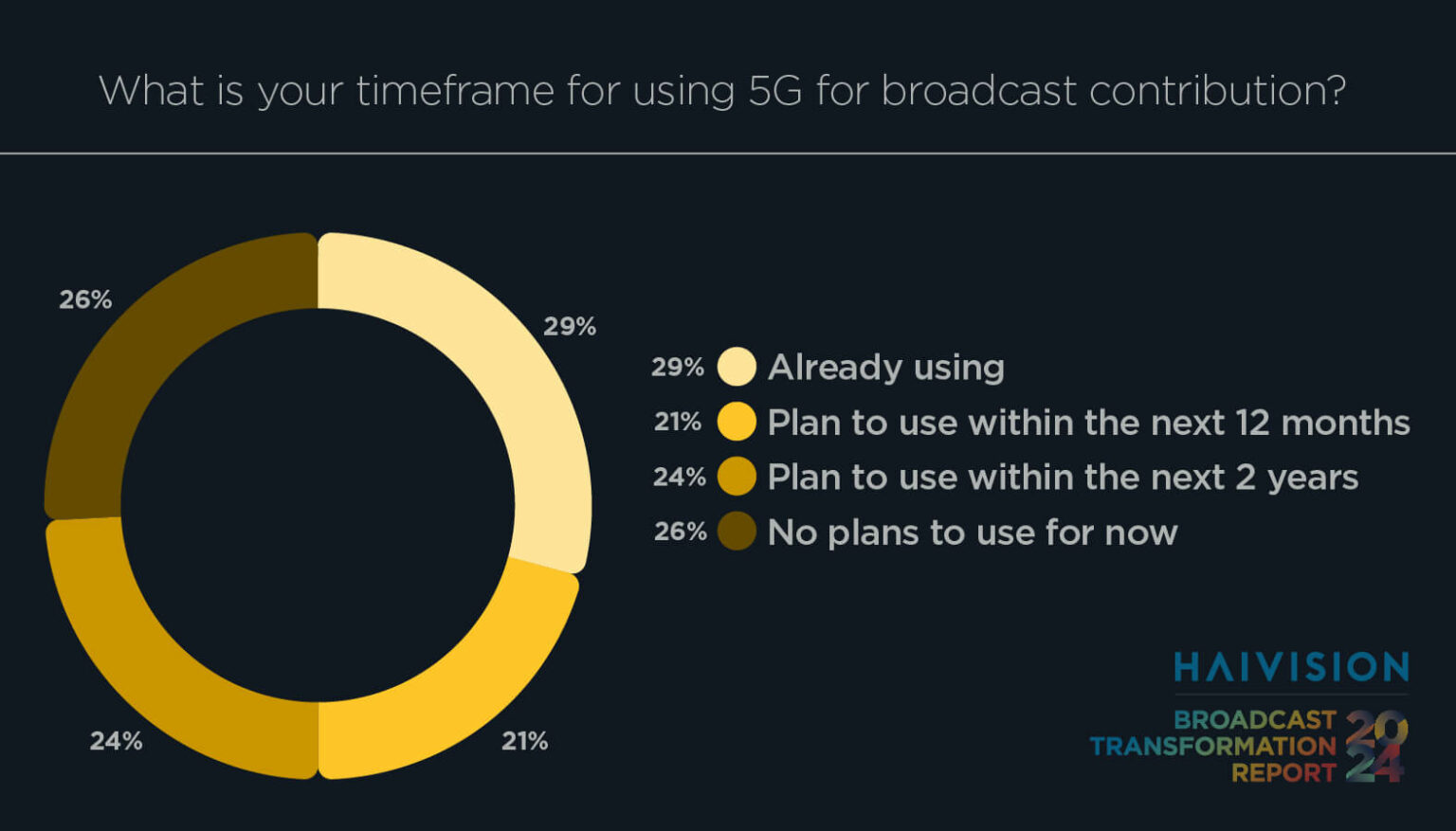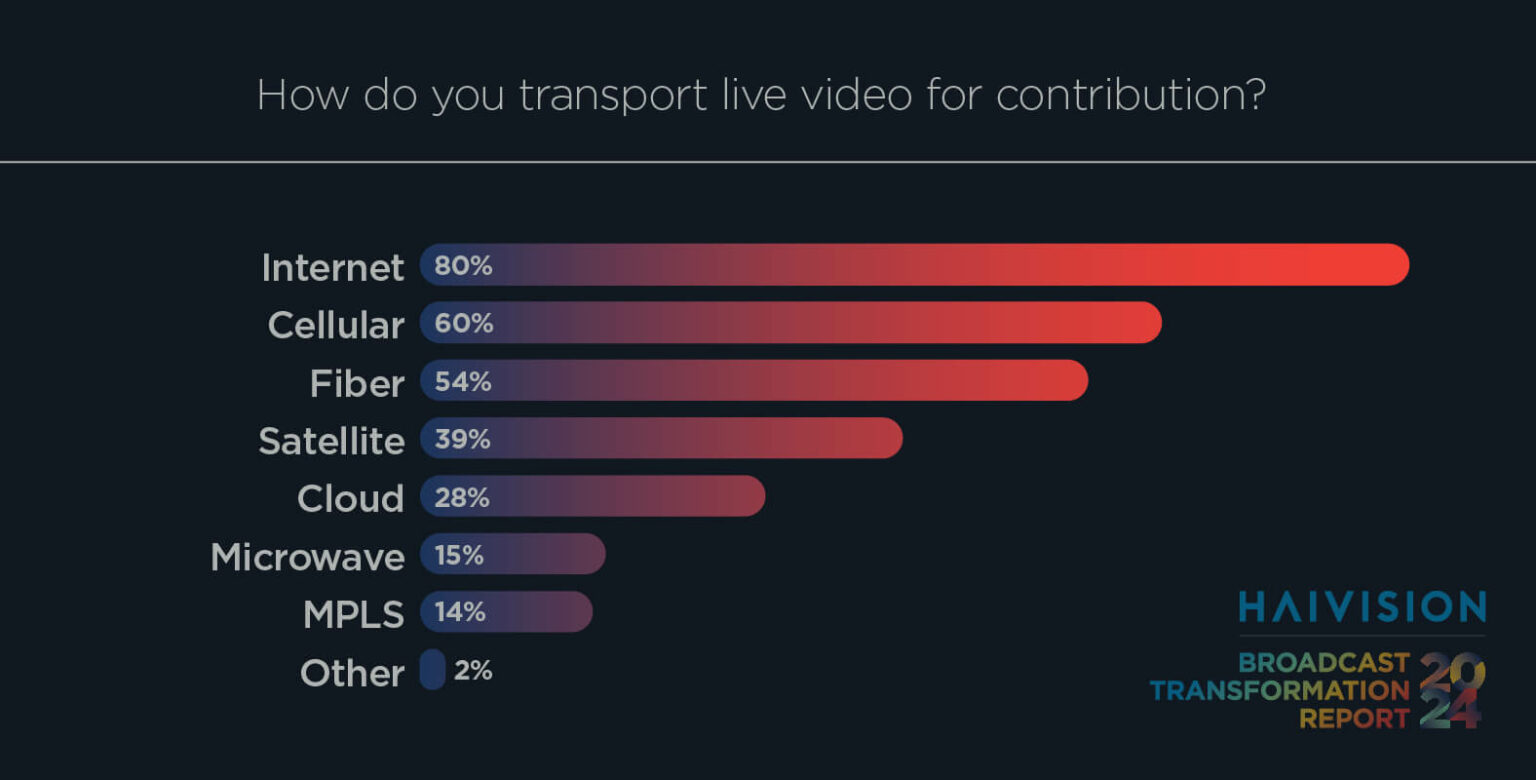
Cloud-based workflows are becoming ubiquitous but on-premise solutions continue to play a central role, according to a new industry trends report from Haivision.
The company’s “Broadcast Transformation Report” also found an increased adoption of cellular networks, with 60%of broadcasters using these networks for transport and 80% using the internet, showcasing the industry’s reliance on diverse network technologies.
The findings also underscored the increasing significance of 5G, with74% of broadcasters either currently using or planning to use 5G for broadcast contribution in the next two years.

When it comes to cloud, the report found 84% of broadcasters use at least some cloud-based technology, but only 22% use it for more than half of their current workflow elements.
While more than half (58%) of broadcast professionals have implemented IP and cloud-based broadcast infrastructure, a substantial amount (86%) of those surveyed continue to use SDI.

Respondents primarily use cloud-based solutions for encoding/transcoding (44%), stream routing (43%), and remote collaboration (39%).
Fifty-nine percent of broadcasters rely on cloud for less than 25% of their workflows, indicating that on-premise technology continues to remain critical to broadcast workflows. Haivision said this finding suggests that broadcasters expect to leverage both technologies for the foreseeable future.

As organizations consider workflows that include cloud and IP technology, those surveyed indicated network reliability (46%), budget limitations (46%), and bandwidth availability (40%) as the primary challenges in their shift to IP or the cloud.
Besides cloud-based workflows, respondents indicated the use of other IP technologies, mainly NDI (40%) and SMPTE ST 2110 (36%).
Cellular Transport is Now Mainstream
Sixty percent of respondents said their organization currently uses 3G, 4G, LTE, or 5G for live video contribution, making cellular the most popular network for transport after the internet (80%).
Nearly three-quarters of broadcasters already use or plan to use 5G for broadcast contribution. Forty-six percent anticipate using 5G with private networks. Additionally, 15% are using 5G only, which is an increase of 5% over last year’s survey. Satellite usage remained steady from last year’s report, and fiber increased by 4%.

Regarding 5G adoption timeframes, 74% of broadcasters already use or plan to use 5G for broadcast contribution within the next two years.
More specifically, 29% of respondents are already using 5G for broadcast contribution, a 9% increase from last year’s survey. Greater bandwidth (51%) and lower latency (48%) are touted as the top benefits 5G can offer within live production workflows.
AI Makes an Impact

Unsurprisingly, most broadcasters predict AI will have most impact on the industry of any technology over the next five years, with 49% planning to or already using AI in their workflows. 5G remained as a strong runner-up at 57%, however the number of respondents citing HDR dropped by 5% and ATSC 3.0 dropped by 10%.
The most commonly cited benefits of AI on live production workflows were efficiency gains through automation and automated translation and closed captioning.
READ MORE: Broadcast Transformation Report 2024 (Haivision)

Why subscribe to The Angle?
Exclusive Insights: Get editorial roundups of the cutting-edge content that matters most.
Behind-the-Scenes Access: Peek behind the curtain with in-depth Q&As featuring industry experts and thought leaders.
Unparalleled Access: NAB Amplify is your digital hub for technology, trends, and insights unavailable anywhere else.
Join a community of professionals who are as passionate about the future of film, television, and digital storytelling as you are. Subscribe to The Angle today!


